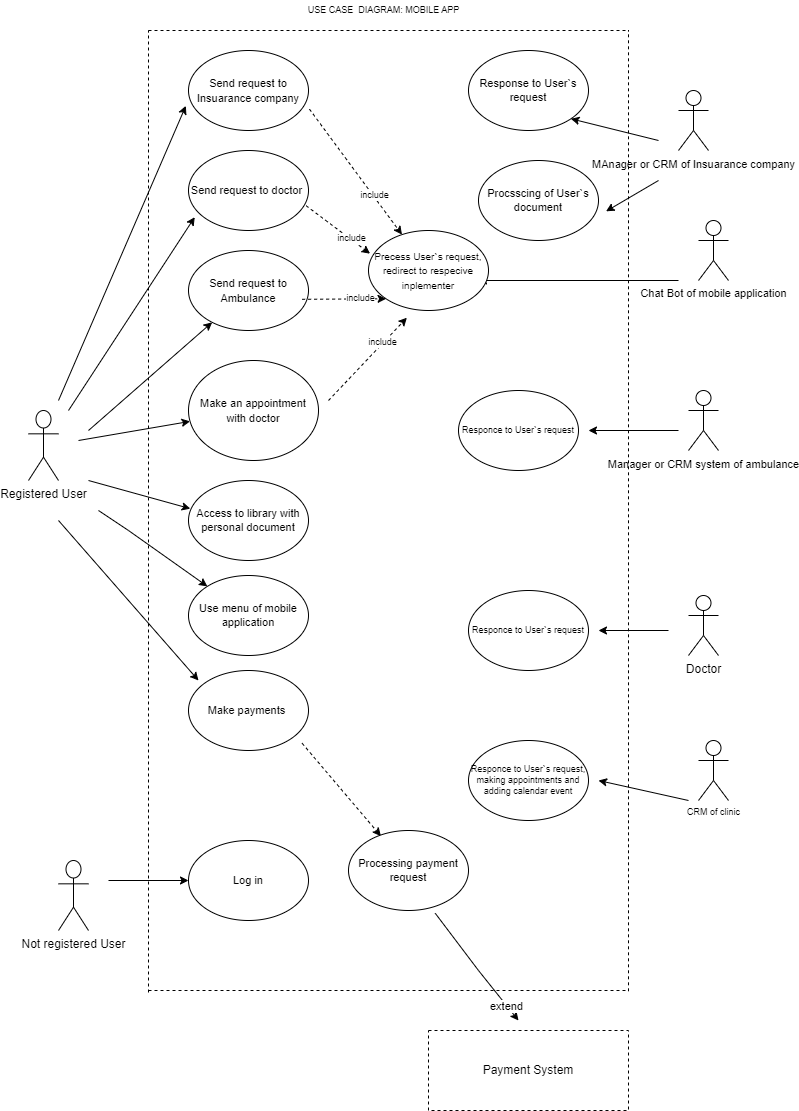Use Case: Theoretical Definition And Practical Approach
Use cases are used to explain and document the interaction that is required between the user and the system to accomplish the user's task. Business analysts are typically responsible for writing use cases. When are they employed in software development process? Practice of business analysts includes a lot of different ways of identifying, documenting and developing client`s requirements. Use case is one of them. Use case is a step description of the system behavior when interacting with someone or something (actors). The format of use case is more strict than stories — a broader description of the scenario with an alternative flow of actions. There are several ways to present (documentation) — charts, tables, formal descriptions and others. In 1986, Ivar Jacobson was the first who formulated textual and visual modeling techniques for specifying use cases in 1986. And in 1992 his co-authored book ‘Object-Oriented Software Engineering - A Use Case Driven Approach’ helped to spread and popularize the technique for revealing functional requirements, especially in software development.
Pattern Of Use Case and Principles of Composition
There is no one approach to capturing use cases.
Use case presentation has different ways: descriptive (as a table) or diagramme.
The descriptive framework is more representative and may include alternative scenarios.
The basic framework of descriptive use case includes such elements as:
- name: it shouldn't be long, but capacious enough;
- aim: clear and end;
- actors: objects that are interactive with each other;
- preconditions: conditions without which the scenario is not possible;
- scenario: take action aimed at achieving goals. Also, the scenario can include alternative scripts and exceptions
- postconditions: conditions under which the scenario is completed
That is, for our example, there is a mobile application for health insurance. This app may include the 'Appointment' module, 'Contract' module, and others. The use case approach is a convenient, harmonious, and structured architecture of business logic that is required.
Examples of Descriptive Use Case
Let's consider some examples.
Appointment module for doctors’ meeting
|
Scheduling Appointment_UC_1 |
Appointment module for doctors’ meeting |
|
Descriptions |
The user makes an appointment with a family doctor |
|
Actors |
|
|
Preconditions |
User is registered as a client of insurance company, application is launched |
|
Main Scenario |
1. The user opens the main screen of the application. 2. From the proposed 4 treatment scenarios, he chooses the 'Appointment' scenario. 3. The application system sends a request to the clinic's CRM. 4. The clinic's CRM system responds and 'relays' the user's doctor's appointment calendar through the application screen. 5. The user selects a convenient time slot for recording and confirms it. 6. CRM of the clinic fixes the record with the system. 7. The clinic's CRM system confirms the user's entry to the application system. 8. The application system displays the confirmation of the appointment. 9. The application system synchronizes with the user's Calendar and creates a respective appointment event. |
|
Alternative Scenario |
2.a - From the proposed 4 requests, the order of the scenario "Write a request". 2a-1 The application system opens a chat with the manager of the insurance company. 2a-2 User reports risk of loss. 2a-3 The manager and the user in the correspondence agree on a convenient time slot for recording. 2a-4 The manager opened a record in the clinic's CRM system 2a-5 Follow steps 6-7. 2a-6 The system creates and displays it in the "Notifications" section. 2a-7 Follow step 9. |
|
Postcondition |
The appointment with a doctor is created in clinic’s CRM. The event has been created in the user's Calendar. The service has been registered in insurance`s system. |
Contract signing
|
Scheduling Appointment_UC_1 |
Conclude a health insurance contract |
|
Descriptions |
The user enters into an insurance contract |
|
Actors |
|
|
Preconditions |
User is registered as a client of insurance company, application is launched |
|
Main Scenario |
1. The user clicks the ‘Menu’ of the application. 2. In the "Menu" the user selects the "Services" section. 3. The user selects the required contract service package and clicks on the "Conclude a contract" button. 4. The system of the insurance company generates a contract based on the available customer data and displays for review. 5. The application system sends a link to the "Notifications" to confirm the conclusion of the contract by the user. 6. The user follows the link to the insurance payment page 7. The user makes a purchase of the service. 8. The payment system transfers money from the client's account to the account of the insurance company. 9. The application system sends a notification to the user about the successful payment. 10. The application system sends a notification to the user about the concluded contract. 11. The system of the insurance company saves the document in the document library of the application in the "Contracts" section. |
|
Alternative Scenario |
No ability to use alternative scenario via app |
|
Postcondition |
The new contract is signed. Insurance premium is paid. |
Example of Use Case Diagram
Use case diagrams are more visual and presentable. You can use, for example, https://app.diagrams.net/ source to apply the diagram method.
As for the components of the use case diagram we should note:
- System
- Actors
- Use Case
- Relationships

In our case system (project) is a mobile application that helps Users to get healthcare services. Actors are Users, CRM systems, and others.
Use case diagram presents possible scenarios of getting services via mobile applications. Relationships are displayed.
Read also: ‘Waterfall’ Model in IT Healthcare: Terms and Niches of Implementation
Conclusions
Thus, use case is a custom target detection method. As for advantages, we can admit:
- easy of use
- clear visibility
- give a high-level understanding of requirements.
- equally understanding and acceptance both by the client and development team
- appeal to the functional behavior of the system
At the same time, we should remember some negative aspects of this method, such as:
- no common rules for documenting business logic and non-functional requirements
- easy format can shift the focus of BA from user problems
- may contain extra details
- not effective if there are too many alternative scenarios
The main thing you need to follow while choosing some methods of identifying and documenting requirements is that it should allow you to convey your thoughts and ideas to the client as accurately as possible, including the primary requirements of the client, and eliminating misunderstandings and deviations from the goals of the project.
Software Development Hub has extensive experience in creating web applications and mobile applications for healthcare businesses. When working on a project, our team takes into account the business challenges the client faces and offers safe, efficient solutions to automate processes and scale your operations while reducing costs.
Our portfolio includes medical information systems, e-Prescription systems, applications for tracking medicines with a QR scanner, medical ERP systems, etc.
Categories
Share
Need a project estimate?
Drop us a line, and we provide you with a qualified consultation.








